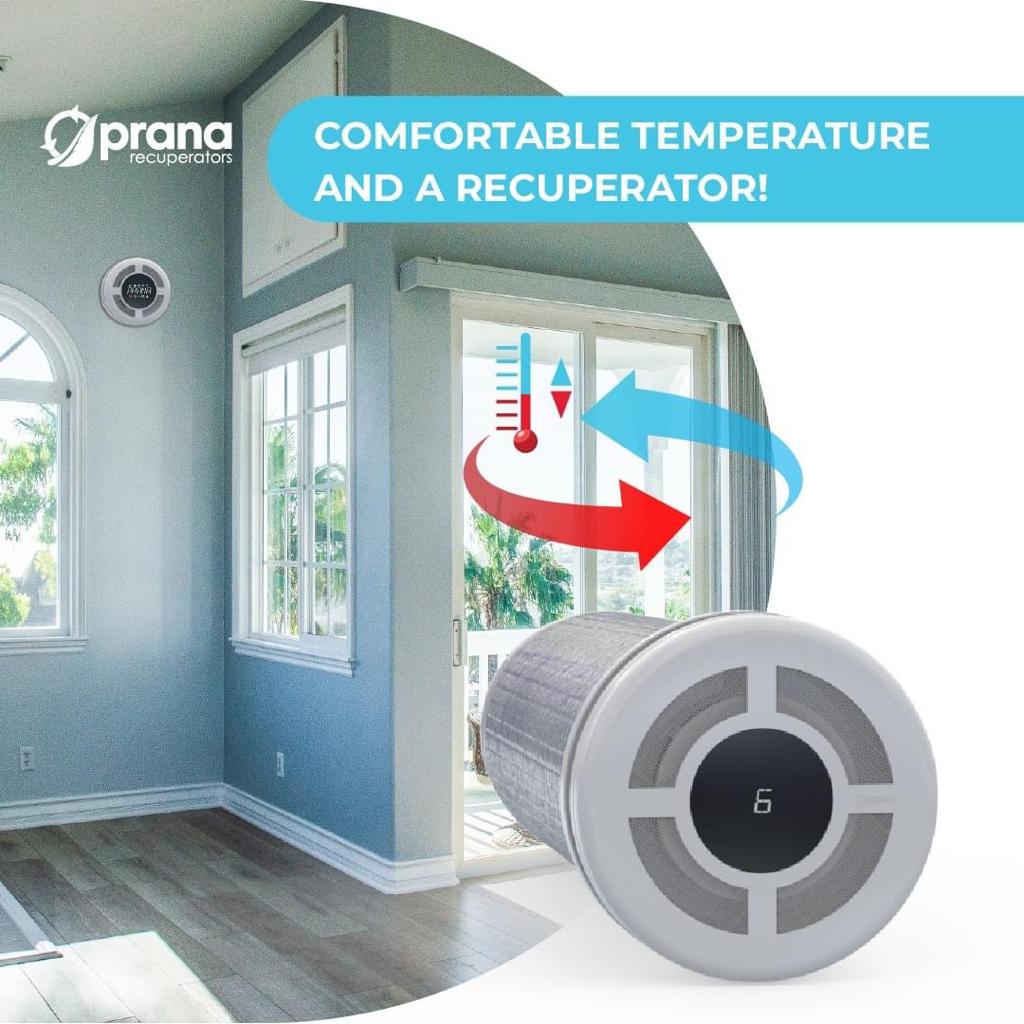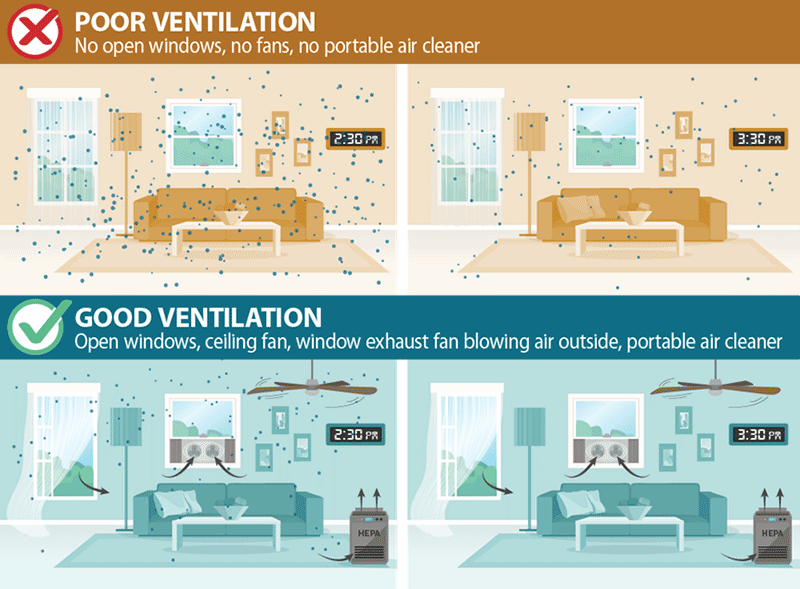Home Ventilation Melbourne Explained: Natural vs Mechanical Options
Checking Out Cutting-edge Solutions for Optimal Home Ventilation Equipments
Home ventilation plays an essential function in maintaining wellness and convenience within living rooms. With innovations in technology, ingenious remedies are emerging to enhance these systems. Smart air flow, energy recuperation ventilators, and advanced filtering are improving exactly how air top quality is taken care of - Home Ventilation Melbourne. However, the assimilation of these modern technologies elevates questions about their performance and flexibility in varied home settings. What ramifications do these growths hold for future living requirements?
The Significance of Home Air Flow for Health and Convenience
Although frequently ignored, home air flow plays an essential duty in keeping both wellness and convenience within domestic rooms. Adequate air flow is essential for the blood circulation of fresh air, which aids to dilute indoor contaminants such as volatile organic compounds, allergens, and smells. Without proper airflow, these contaminants can accumulate, resulting in respiratory concerns and other illness. Furthermore, efficient ventilation adds to regulating moisture levels, protecting against mold and mildew development and structural damages. By ensuring a balanced exchange of air, residents can delight in an extra enjoyable interior environment, enhancing overall well-being. Additionally, adequate ventilation can boost energy efficiency by lowering the need for extreme heating or air conditioning, inevitably leading to reduced energy expenses and a much more lasting space.
Smart Air Flow Systems: Harnessing Technology for Performance
Smart air flow systems represent a considerable development in home air monitoring, leveraging IoT integration for improved control. These systems not only promote power performance yet additionally use remote monitoring capacities, allowing customers to maximize their interior atmospheres seamlessly. By taking advantage of technology, home owners can achieve enhanced air quality while reducing energy consumption.
IoT Combination Benefits
How can IoT combination transform typical ventilation systems into very effective wise solutions? By incorporating Internet of Points (IoT) innovation, ventilation systems can accomplish real-time monitoring and control, enhancing their functional efficiency. Sensors put throughout a home collect information on air temperature level, top quality, and moisture, permitting automated modifications based upon present conditions. This instant responsiveness results in improved indoor air high quality and comfort degrees. Additionally, IoT-enabled systems can interact with other wise home devices, producing a cohesive ecosystem that enhances power usage. Customers can likewise access and manage their air flow systems remotely using smart devices, providing ease and raised control. Generally, IoT combination represents a substantial innovation, bringing intelligence and versatility to standard air flow practices.
Power Effectiveness Features
As power efficiency comes to be an essential emphasis in modern-day home design, progressed ventilation systems offer cutting-edge functions that greatly reduce energy consumption. These wise air flow systems make use of sensing units to check indoor air temperature, top quality, and moisture levels, automatically readjusting air movement to maintain ideal conditions. By employing energy recovery ventilators (ERVs), they reuse and capture energy from outbound air, reducing home heating and cooling demands. Variable speed followers further boost effectiveness by readjusting their operation based upon real-time needs, avoiding unnecessary power waste - Home Ventilation Melbourne. In addition, programmable timers and occupancy sensing units ensure that ventilation runs only when required, adding to lower utility expenses. Collectively, these attributes stand for a considerable development in creating sustainable and energy-efficient living settings
Remote Surveillance Capabilities
What advantages do remote monitoring capacities bring to contemporary home ventilation systems? These capacities enable property owners to track indoor air top quality and system efficiency in genuine time, improving total efficiency. By providing information on temperature level, moisture, and air pollutants, smart air flow systems allow proactive changes, ensuring optimal conditions. Additionally, remote surveillance assists in upkeep signals, recognizing potential concerns prior to they rise, thus decreasing repair service expenses and downtime. Customers can access system analytics via mobile applications, permitting hassle-free control even when far from home. This technical combination not only advertises energy performance yet likewise adds to a much healthier living environment. Eventually, remote monitoring capabilities stand for a substantial innovation in home ventilation, aligning with the growing need for clever home modern technologies.
Energy Healing Ventilators: Maximizing Power Financial Savings
Power recovery ventilators (ERVs) play an essential role in enhancing home power performance via efficient warm exchange. By moving thermal power between outward bound and incoming air, these systems significantly minimize overall energy intake. This innovative approach not just preserves interior air quality yet likewise contributes to lower utility prices.
Effectiveness of Warmth Exchange
While preserving indoor air high quality is necessary for health and wellness and convenience, the effectiveness of warm exchange in power healing ventilators (ERVs) plays a crucial duty in making the most of energy savings. The key feature of an ERV is to transfer heat and dampness between outbound and inbound jet stream, which optimizes indoor problems while reducing energy loss. High-efficiency warmth exchangers can substantially decrease the load on home heating and cooling systems by recovering power that would or else be thrown away. The effectiveness of these systems is usually measured by their core temperature level exchange rates, which can vary based upon design and products used. By focusing on advanced heat exchange innovations, house owners can improve their ventilation systems, causing enhanced energy effectiveness and cost reductions in time.
Minimized Power Intake
Lowering power usage is a key advantage of power recuperation ventilators (ERVs), as they successfully reuse thermal energy from worn down air. By moving warm in between inbound and outbound jet stream, ERVs decrease the requirement for added home heating or air conditioning, causing considerable energy cost savings. This procedure not only decreases energy expenses yet also reduces the environmental influence connected with greater energy usage. Furthermore, ERVs maintain regular indoor air quality without compromising thermal convenience, creating a balanced living atmosphere. By incorporating ERVs right into home air flow systems, homeowners can accomplish greater energy effectiveness, enabling a sustainable technique to indoor air administration while profiting from lower energy expenses. Inevitably, ERVs represent a compelling service for energy-conscious customers.
Advanced Filtration Technologies for Cleaner Indoor Air
As interior air top quality becomes increasingly acknowledged as a vital component of health and wellness and well-being, progressed filtration modern technologies are becoming essential tools for ensuring cleaner environments. These technologies include high-efficiency particle air (HEPA) filters, triggered carbon filters, and electrostatic precipitators, each developed to efficiently record airborne pollutants, irritants, and volatile natural compounds (VOCs) HEPA filters can trap bits as tiny as 0.3 microns, greatly decreasing allergens like allergen and pet dander. Turned on carbon filters excel in adsorbing odors and chemical vapors, contributing to a fresher interior ambience. In addition, electrostatic precipitators utilize electrical costs to eliminate particles, giving an energy-efficient alternative. By incorporating these innovative purification systems, home owners can improve indoor air top quality and promote healthier living areas.
The Role of Sensors in Enhancing Air Movement and High Quality
Exactly how can sensors transform the management of indoor air quality? Sensors play a vital function in enhancing airflow and improving indoor environments. By constantly monitoring elements such as humidity, temperature level, and degrees of toxins, they supply real-time information that notifies air flow systems. This info makes it possible for computerized changes to air flow, making certain adequate flow and reducing the accumulation of pollutants. Additionally, advanced sensors can find certain air top quality concerns, motivating prompt reactions to boost convenience and wellness. The integration of these devices right into ventilation systems enables for an extra reliable and receptive administration technique, minimizing energy intake while keeping suitable air top quality. Inevitably, sensing units useful source work as an important component in producing much healthier indoor spaces via accurate air movement regulation.
Integrating Air Flow With Smart Home Systems
While lots of homeowners look for benefit and efficiency, integrating ventilation systems with clever home technology offers an ingenious service to handling interior air high quality. By connecting ventilation units to clever home centers, citizens can automate air top quality monitoring and control airflow based on real-time information. These systems can react to adjustments in contaminant, moisture, and temperature level levels, ensuring ideal indoor problems. Smart thermostats can work in tandem with ventilation systems to enhance power performance, decreasing expenses while maintaining comfort. Homeowners can additionally remotely regulate their ventilation setups through mobile apps, supplying flexibility and tranquility of mind. Inevitably, this combination not only simplifies management but greatly boosts the total living atmosphere, making it a useful addition to modern homes.
Future Trends in Home Air Flow Solutions
Arising innovations and heightened understanding of indoor air quality are forming the future of home air flow services. One significant fad is the assimilation of expert system, making it possible for systems to readjust air flow based on real-time information and occupancy patterns. Furthermore, power healing ventilators are gaining grip, providing reliable air exchange while reducing energy loss. Using green materials and layouts is likewise on the rise, lining up with sustainability goals. Smart sensing units that keep track of pollutants and humidity degrees are ending up being standard, permitting house owners to preserve perfect interior atmospheres. Moreover, scalable and modular systems are emerging, giving customizable alternatives for various home dimensions and configurations. Home Ventilation Melbourne. With each other, these innovations promise to improve comfort, effectiveness, and health and wellness in residential rooms
Frequently Asked Concerns
Just how Frequently Should I Tidy My Home Air Flow System?

The regularity of cleaning a home ventilation system differs based upon use and atmosphere. Generally, it is recommended to clean up the system every 3 to 6 months to keep optimal air top quality and system efficiency.
Can Poor Air Flow Cause Mold And Mildew Growth Inside?

What Are the Signs of Inadequate Home Ventilation?
Indications of inadequate home air flow consist of relentless odors, enhanced moisture degrees, condensation on home windows, visible mold growth, and a basic feeling of stuffiness. These signs usually suggest that air flow is not enough for maintaining a healthy interior environment.
Exactly How Can I Improve Ventilation in Older Houses?
To enhance ventilation in older homes, one may think about setting up exhaust followers, making use of all-natural air movement through home windows, securing voids for far better air control, and including air cleansers to boost indoor air top quality properly.
Are Do It Yourself Air Flow Solutions Effective and Safe?

Smart ventilation, energy healing ventilators, and advanced filtering are reshaping how air high quality is managed. As energy efficiency becomes a vital emphasis in contemporary home style, advanced ventilation systems offer innovative functions that substantially lower power usage. By integrating ERVs into home ventilation systems, home owners can attain higher energy effectiveness, allowing a sustainable method to indoor air management while profiting from reduced energy bills. The assimilation of these tools into ventilation systems allows for a more responsive and efficient management approach, reducing power consumption while maintaining perfect air top quality. While many home owners look for convenience and efficiency, incorporating ventilation systems with smart home modern technology uses an innovative remedy to handling interior air high quality.